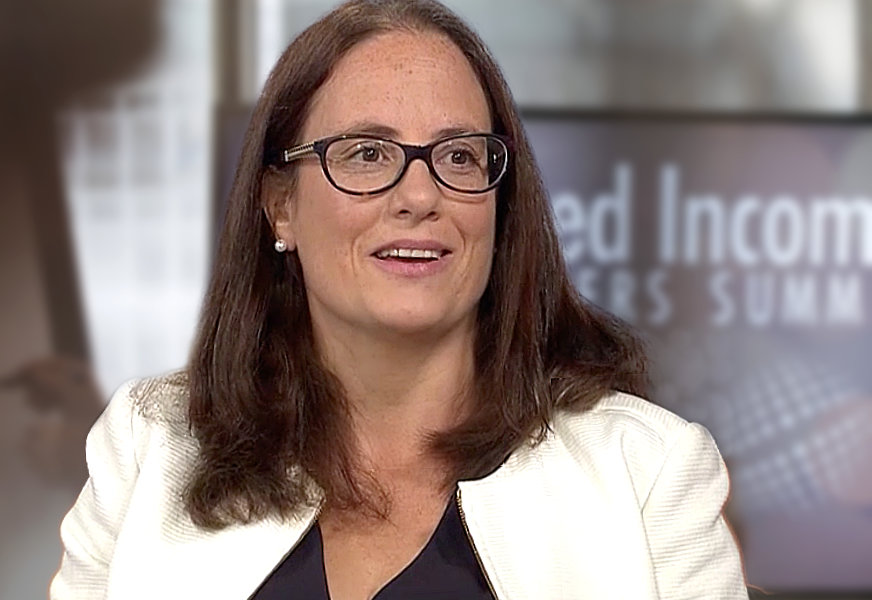The rise in bilateral streaming and the regulatory push towards central clearing can increase the diversity of trading counterparties and boost liquidity according to panelists at the Fixed Income Leaders Summit (FILS) in London.

Nichola Hunter, head of rates at MarketAxess, said banks have been providing bilateral prices to their clients for many years.
“Bilateral streaming is the aggregation of multilateral streams of firm prices into a venue like MarketAxess that can be distributed to a wide participant base,” she said. “Liquidity providers can tailor their prices and order book specifically to the end-client, and the big advantage is that they are real-time executable prices at point of click, not indicative prices.”
She believes bilateral streaming is highly beneficial compared to central limit order books which are priced to the lowest common denominator and which have an element of toxicity due to high-frequency trading strategies.
“We are at an inflection point where bilateral streams will be an alternative to CLOBs and growth will come from introducing new execution protocols to buy-side clients,” Hunter added.
Bilateral streaming is relatively mature in the interdealer space such as in US Treasuries where around 15% of on-the-run volume is executed via bilateral streams according to Hunter.

Max Verheijen, director, Financial Markets at Cardano, said the firm had traded some small deals using bilateral streams, although the majority of their business is still executed via request for quotes (RFQs).
“You can enter bilateral streaming anonymously, you don’t have to show any interest or any side of a trade and you get pricing information so that is interesting,” he added. “There was one time when it was very hard to find a particular bond for a client but we were able to buy it through a direct stream, so it is an additional source of liquidity.”
Hunter continued that venues such as MarketAxess have a role to remove friction and provide easier access to participants and liquidity. For example, in the inter-dealer market approximately 60% of volume is with alternative liquidity providers but market structure has prevented that liquidity from being accessible downstream to buy-side clients.
“Streaming, access to different protocols and clearing helps to remove friction,” said Hunter. “Venues acting as intermediaries also helps and continued choice is what the buy side is asking for.”
Clearing and transparency
Hunter said that since the liquidity crunch in March 2020, the drumbeat for mandatory clearing of US Treasuries is banging hard as less than 20% is currently cleared. In particular, The Treasury Market Practices Group (TMPG) has been calling for mandatory clearing for a period of time.
She said: “The underlying push for mandatory clearing is to increase the ability for participants to trade with other participants.”

In the derivatives market, many pension funds are voluntarily clearing as the uncleared margin regulations (UMR) are being phased in. Nick Steele, chief risk officer at SwapClear, LCH said central clearing lowers the bar to trading with many more counterparties as well as reducing balance sheet costs for banks, which increases their trading capacity.
Clearing is also increasing in the repo market. Matthias Graulich, member of the clearing executive board at Eurex & managing director at Eurex Repo, said buy-side firms can directly access the CCP with a clearing agent taking over certain obligations related to the default fund.
“The buy side benefits from better repo rates due to access to a much broader range of market participants,” he said.
The buy side also uses repo clearing as a collateral transformation vehicle to generate cash which they can use for margin payments.

Corentine Poilvet-Clediere, head of RepoClear, Collateral and Liquidity Management at LCH, said repos were consuming too much bank capital so the clearing industry had to develop sponsored clearing, giving the buy side direct access to CCPs.
“In the US Treasury market and EU rates market there is a structural imbalance between supply and demand. There are not enough market makers while central banks have expansionary public policies,” she said. “One of the levers to trigger a rebalance is to increase repo clearing which brings a more diverse population to the CCP.”
Conference photos courtesy of Richard Hadley.
©Markets Media Europe 2025























